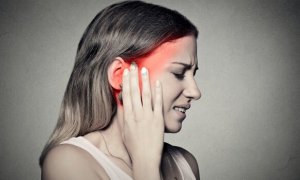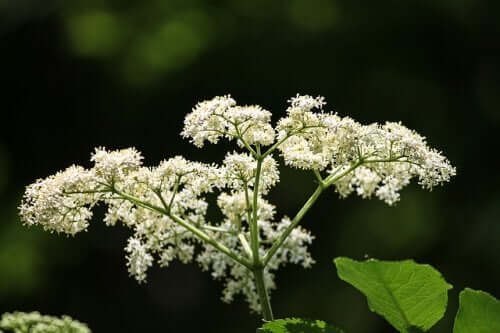Coping with Trigeminal Neuralgia: Three Remedies

Coping with trigeminal neuralgia can be hard. Generally, this sensory disorder causes a sort of “electric shock” in the area of the head, face, and neck that’s quite painful. So, today we’d like to tell you how to deal with it using some natural remedies.
For the most part, the people afflicted with neuralgia are usually over 50 years old. However, the symptoms aren’t consistent. What this means is many weeks may go by in which a person displays no symptoms. It’s for this reason that a timely diagnosis isn’t easy, as there are often many doubts as to whether a certain condition is in fact neuralgia. As a consequence, proper treatment is also hard to set in place.
Remedies for Coping with Trigeminal Neuralgia
However, before we tell you about some natural remedies that can be of great help to cope with trigeminal neuralgia, let’s emphasize the importance of consulting a doctor. Keep in mind these remedies alone won’t solve your condition, they’ll only help you feel better along with medical treatment.
These remedies aren’t at all a substitute for medical treatment. This type of disorder requires specific medications and, in some cases, surgical treatment as well.
1. Elderflower

Elderflower is a popular remedy to deal with symptoms of neuralgia. Actually, the flowers are widely used in phytotherapy because due to their anti-inflammatory properties that are useful in the treatment of symptoms of neuralgia.
Here are just a few of its noteworthy properties:
- Emollient: It helps reduce inflammation when used externally.
- Antispasmodic: It prevents the shock sensation.
- Venotonic: It promotes proper blood circulation.
This mode of the application here is external. To do so, make an infusion with elderberry leaves. Then, soak some compresses and put them where it hurts on your head, face, or neck. You’ll feel immediate relief.
You may be interested: Seven Natural Remedies for Persistent Headaches
2. Vetiver for Coping with Trigeminal Neuralgia

For our second remedy, you can use vetiver, which you can easily find as an essential oil. Overall, its soothing, anti-inflammatory properties make it an excellent ally in the pain management of neuralgia.
However, to be truly effective, you should infuse the root of the plant. Then, apply it directly to the affected area (head, face, neck) with a gentle massage.
3. Arnica

Arnica is our third remedy for treating your symptoms of neuralgia. These yellow flowers have many beneficial properties, and you can treat a wide variety of problems with them.
For example, Arnica:
- Is anti-inflammatory.
- Is analgesic.
- Can reduce edema (swelling).
Overall, one of the best ways to use this remedy is to use it topically in its tincture form. To begin, dilute it in water and then apply it with a gentle massage on any affected areas.
You may be interested: Five Facts About Trigeminal Neuralgia
Keep in Mind
You should remember that although these three remedies are great for the treatment of the symptoms of neuralgia, they won’t cure the condition. So, you must see a doctor to make sure you have adequate control and medical treatment.
In fact, you should only complement the treatment prescribed by your doctor. Likewise, make sure to ask the physician if these remedies could interfere with the main treatment in any way. The drugs your doctor will prescribe will most likely consist of anticonvulsants and muscle relaxants. Likewise, they may also recommend botox injections (in very small doses).
In the most severe cases, surgery will be your best solution. This is a good way to correct the root problem and keep it from ruining your good times.
Have you been diagnosed with neuralgia? Do you know anyone who’s in pain from it? We hope that when you begin to use these remedies to improve your quality of life.
All cited sources were thoroughly reviewed by our team to ensure their quality, reliability, currency, and validity. The bibliography of this article was considered reliable and of academic or scientific accuracy.
- Brecher, E., Kutner, M., Viswanath, A., Finkelman, M., Reid, D., Chang, D. & Papageorge, M. (2019). Homeopathic arnica montana in reducing edema and pain following third molar extraction. International Journal of Oral and Maxillofacial Surgery, 48(61). DOI:10.1016/j.ijom.2019.03.186
- Clapé Laffita, Oneyda, & Alfonso Castillo, Alfredo. (2011). Caracterización fármaco-toxicológica de la planta medicinal Sambucus nigra subsp. canadensis (L). R. Bolli. Revista Cubana de Farmacia, 45(4), 586-596. Recuperado en 15 de abril de 2019, de http://scielo.sld.cu/scielo.php?script=sci_arttext&pid=S0034-75152011000400013&lng=es&tlng=es.
- del-Puerto-Horta, M., Casas-Insua, L. & Cañete-Villafranca, R. (2013). Usos más frecuentes de Arnica montana. Revista Cubana de Plantas Medicinales, 18(2), 315-326. Recuperado en 15 de abril de 2019, de http://scielo.sld.cu/scielo.php?script=sci_arttext&pid=S1028-47962013000200014&lng=es&tlng=es.
- Grover, M., Behl, T., Bungau, S., & Aleya, L. (2021). Potential therapeutic effect of Chrysopogon zizanioides (Vetiver) as an anti-inflammatory agent. Environmental science and pollution research international, 28(13), 15597–15606. https://doi.org/10.1007/s11356-021-12652-z
- Madaleno, I. M., & Delatorre-Herrera, J. (2013). Medicina popular de Iquique, Tarapacá. Idesia (Arica), 31(1), 67-78.
- Palomino, O., García-Aguilar, A., González, A., Guillén, C., Benito, M. & Goya, L. (2021). Biological Actions and Molecular Mechanisms of Sambucus nigra L. in Neurodegeneration: A Cell Culture Approach. Molecules, 26(16). https://doi.org/10.3390/molecules26164829
- Prieto, A., Ocampo, A. A. D., Fernández, A., & Pérez, M. B. (2005). El empleo de medicina natural en el control de enfermedades de organismos acuáticos y potencialidades de uso en Cuba y México. TIP. Revista especializada en ciencias químico-biológicas, 8(1), 38-49.
This text is provided for informational purposes only and does not replace consultation with a professional. If in doubt, consult your specialist.








